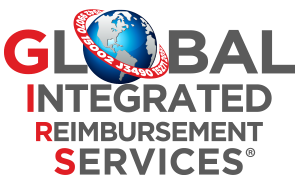CMS has announced a final ruling that will revise regulations for the Medicare Advantage (MA or Part C) program and the Medicare Prescription Drug Benefit (Part D) program beginning on January 1, 2022.
Under the final rule, CMS will allow Part D sponsors/plans to have a second, “preferred” specialty tier with a lower cost sharing amount than their other specialty tier. According to CMS, this change is designed to give Part D plans more tools to negotiate better deals with manufacturers and lower out-of-pocket costs for Medicare enrollees. While CMS is allowing for Part D sponsors to decide what drugs will be placed on either specialty tier, they implemented specific guidelines for the ingredient cost threshold that must be followed for drug eligibility.
Additionally, CMS is increasing a maximum allowable cost sharing that will be applied to the higher cost-sharing specialty tier. Moreover, this new rule will put into place that if a Part D sponsor creates two specialty tiers, one must be a ‘‘preferred’’ tier that offers lower cost sharing than the proposed maximum allowable cost sharing.
Currently, Medicare allows a tiering exception, which is a way to request to obtain a non-preferred drug at the lower cost-sharing terms applicable to drugs in a preferred tier, if clinical requirements are met. CMS clarified that under the new rule, tiering exceptions within the specialty tier would be allowed.
To improve transparency, CMS:
- is listing a maximum allowable cost sharing for the specialty tiers between 25% and 33% that is dependent upon if the plan has a deductible.
- will be evaluating based on a 30-day supply whether the drug has costs high enough to qualify for specialty tier placement.
- will maintain a specialty-tier cost threshold for both specialty tiers so that drugs with monthly ingredient costs in the top 1% are set to represent their monthly ingredient cost.
- will modify down to 10% the specialty-tier cost threshold when yearly data represents a disparity between the specialty-tier cost threshold and the Part D drugs with the top 1% of monthly ingredient costs.
- will annually evaluate and announce the change in specialty-tier cost threshold should a change be necessary from the yearly data analysis.
- additionally notes that they are not finalizing a specialty-tier cost threshold of $780.
These regulatory changes potentially have exponential positive outcomes for beneficiaries as the creation of the second “specialty” tier may result in lower costs for high specialty drugs. For drug manufacturers, the long-term implications will depend on their drugs meeting eligibility requirements. Not sure how this final rule will affect long-term cost for your manufactured drugs? Contact us so we can conduct an overview of your drug’s current reimbursement opportunities and obstacles, evaluate the impact of this new tier for your product, and develop successful reimbursement strategies for market access.
For more information, email us at info@girsinc.com or call us at 901-834-9119.
Disclaimer: The information in this blog is based on payer information which is dynamic. It is accurate at the time of posting but should not be construed to be reimbursement or legal advice. CPT® is the trademark of the American Medical Association (AMA).
Sources:
- https://www.ropesgray.com/en/newsroom/alerts/2021/February/2022-Medicare-Advantage-and-Part-D-Final-Rule-Includes-Update-to-Star-Ratings-System
- Federal Register :: Medicare and Medicaid Programs; Contract Year 2022 Policy and Technical Changes to the Medicare Advantage Program, Medicare Prescription Drug Benefit Program, Medicaid Program, Medicare Cost Plan Program, and Programs of All-Inclusive Care for the Elderly
- https://www.cms.gov/newsroom/press-releases/changes-medicare-advantage-and-part-d-will-provide-better-coverage-more-access-and-improved
About GIRS
For more than 19 years, GIRS has been assisting medical technology manufacturers with their market uptake and reimbursement strategies so that patients can have access to the care that they need. To implement successful market access strategies, the GIRS Value Discovery Landscape Assessments® team and the Payer Advocacy Compass® team work together to develop and implement foundation reimbursement landscape and payer advocacy strategies to obtain positive coverage, appropriate payment, and innovative payer contracting arrangements to improve market uptake. For more information, email us at info@girsinc.com or call us at 901-834-9119.

